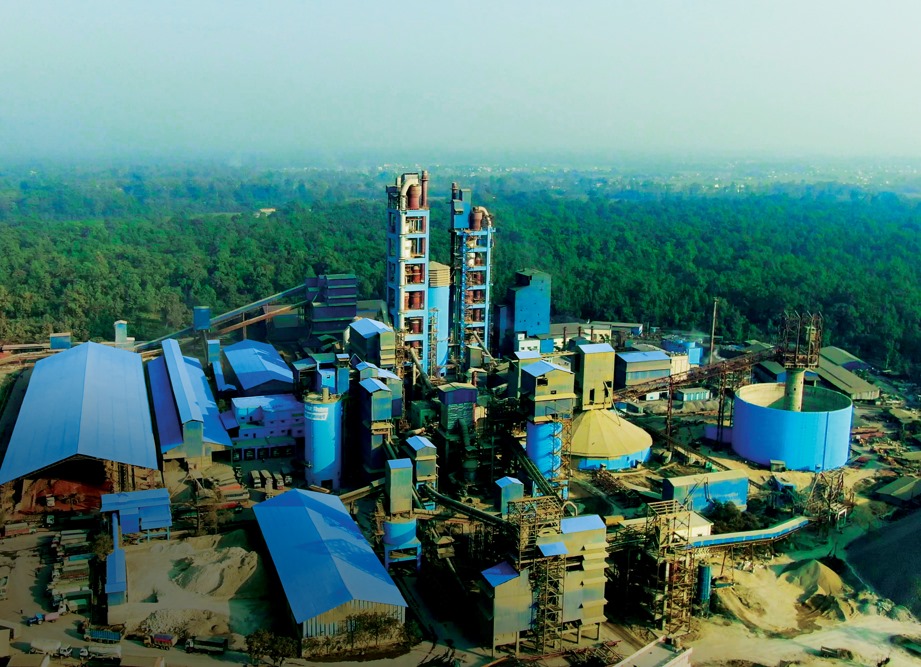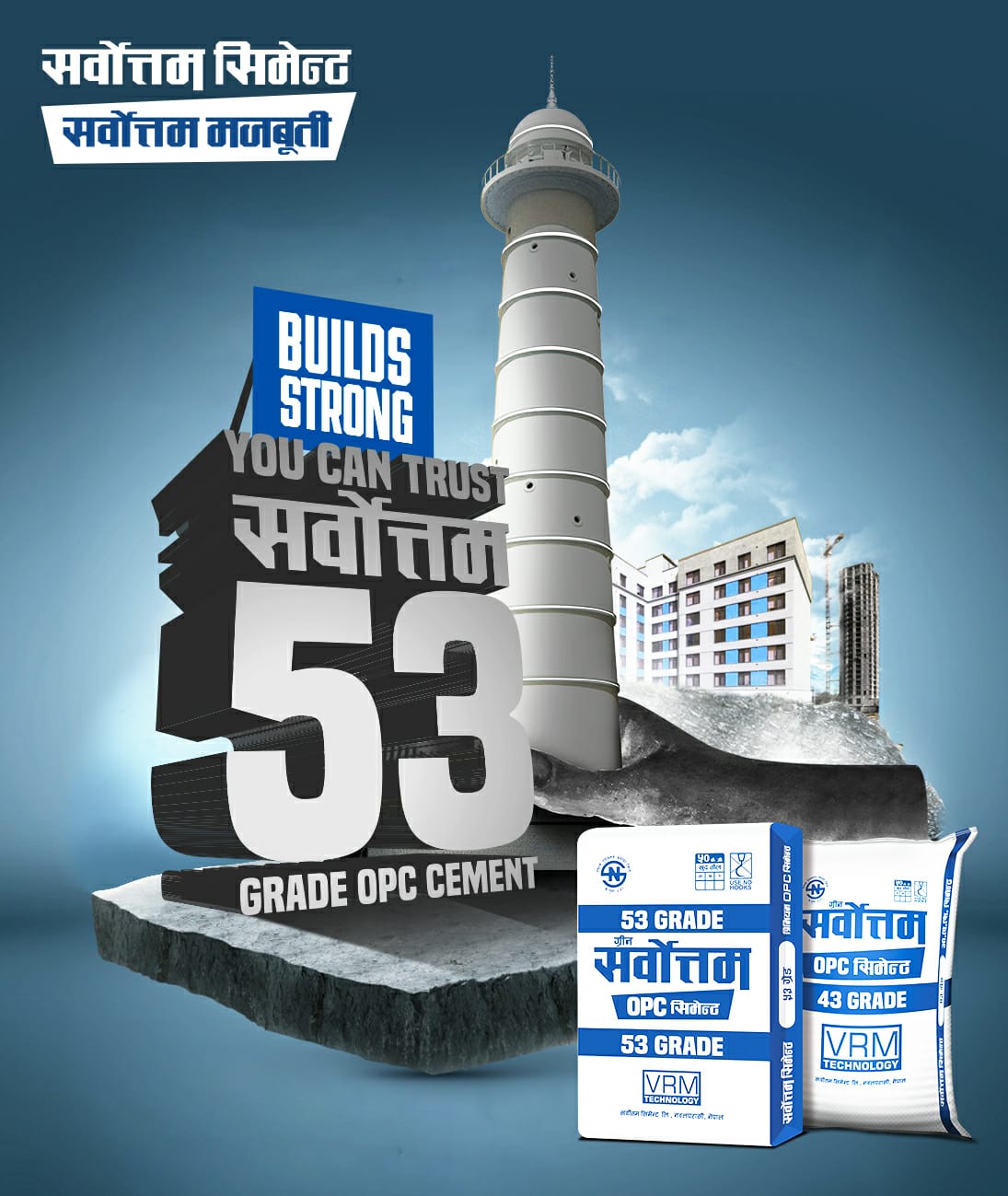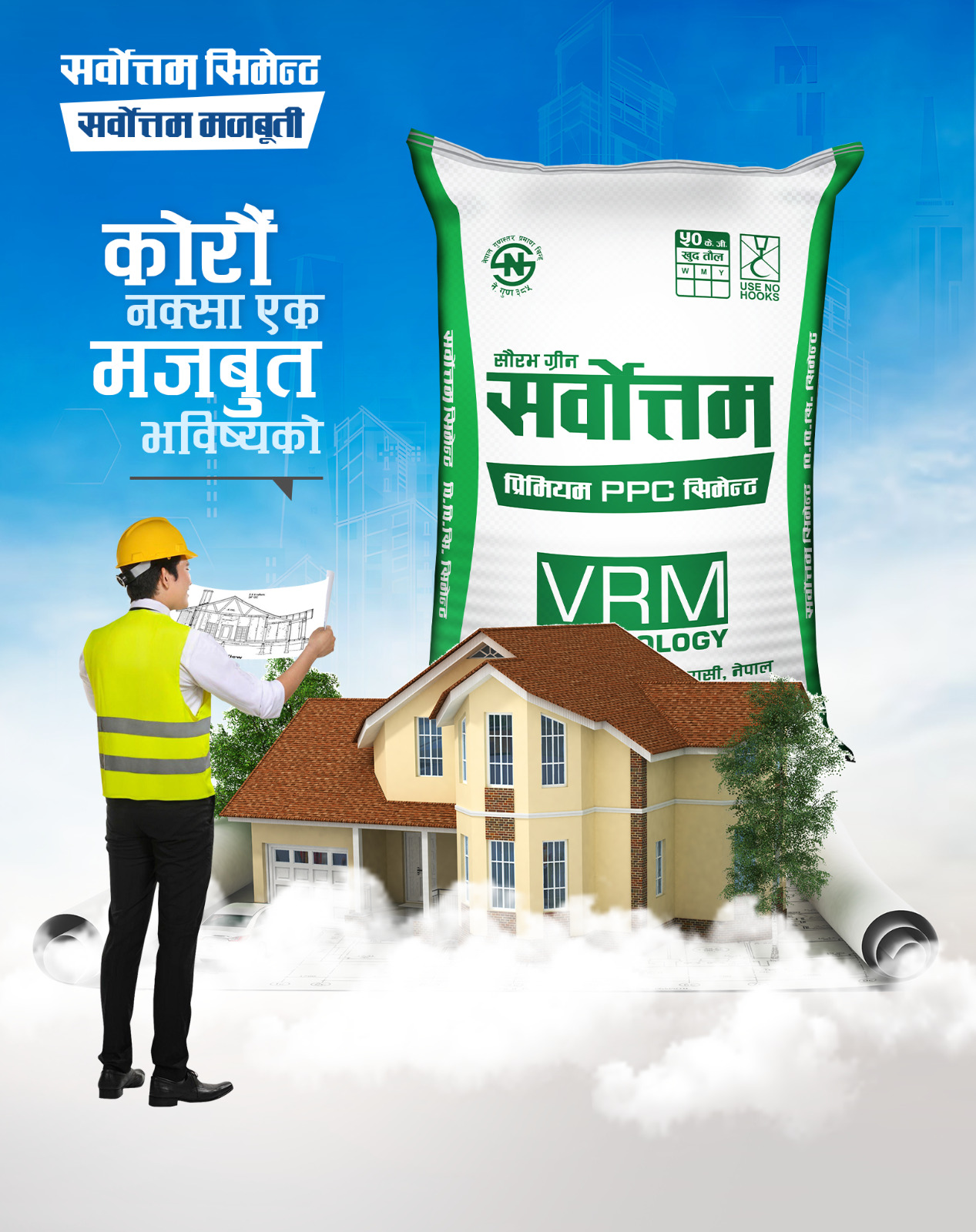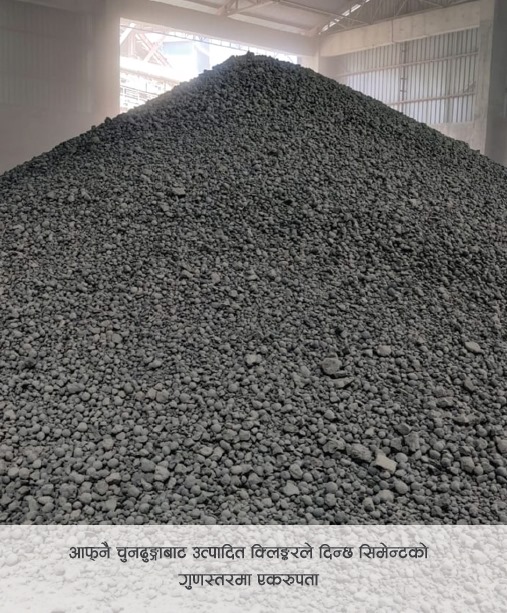Sarbottam Cement Limited


An innovator and pioneer of the cement industry of Nepal, Sarbottam Cement Limited Ltd. (SCL) is the first and only cement manufacturers to use a completely European production line.
We are also the first and only manufacturer that produces cement through the use of a Vertical Roller Mill (VRM). This innovative technology allows us to save up to 50% in energy consumption, thereby drastically reducing our carbon footprint. In this regard, we are the only Nepalese cement manufacturer able to produce eco-friendly or “green” cement.
As healthy dishes can only be made from healthy & fresh ingredients, quality cement can only be made from quality limestone. Dissatisfied with the poor limestone available – substandard in the amount of Calcium Oxide while often containing high levels of Magnesium Oxide – we at Sarbottam Cement have purchased various mines in limestone rich Palpa& Chitwan districts. These mines make available to us some of the finest limestone in the country, and as a result, we are able to deliver to our customers the highest quality cement possible.
Understanding that the majority of our cement is utilized in earthquake prone areas, Sarbottam Cement is uncompromising when it comes to strength and quality. In fact, we here at Sarbottam Cement have pledged to provide cement that all our customers can trust. Our energy efficient production methods coupled with our high-quality raw materials means that our cement just cannot be beat – not by other manufacturers, nor by harsh elements & natural disasters.
Products & Features
Sarbottam Cement offers three products, two of which are Ordinary Portland Cement (OPC), and the third a Portland Pozzolana Cement (PPC); each product is offered in either laminated or non-laminated packaging.
Sarbottam’s OPC Cement

While there have been a range of mortars and adhesive construction materials throughout the history of humans, with ancient Romans being early pioneers in this regard, modern cement as we know it traces its origins to Britain and Germany in the mid-17th and 18th centuries. Ordinary Portland Cement (OPC), in particular, traces its modern form back to 1824, when British inventor and early cement pioneer Joseph Aspdin patented his invention as “Portland cement” — a reference to the Portland Stone Formation, a natural limestone formation, located in the Isle of Portland, England. Joseph’s son, William Aspdin, would later form his own cement manufacturing company and improve upon his father’s work. After a few iterations and revisions in the mid to late 19th century, including with the invention and patent of the rotary kiln, Ordinary Portland Cement as recognizable in the modern age began to take form. From the late 19th century onwards to the present day, the versatility offered by this new cement — whether used in conjunction with bricks, or mixed with aggregates to form concrete — led to its widespread proliferation. Concrete made by using OPC cement is often used in critical areas of construction projects, where a high degree of strength is required, such as in load-bearing beams & pillars, roads, tunnels, hydropower dams, etc.
Sarbottam’s OPC Cement goes above and beyond the minimum quality standard set by the Bureau of Standards & Metrology (NS), and differs from the competition by:
- providing a higher Blaine and hence finer cement, up to 4500 cm2/g compared to about 3000 cm2/g (or less),
- being comprehensively free from alkalis,
- providing 20% or more bonding strength, therefore requiring at least 20% less cement for the same job,
- delivering the strength of M35 and M40 concrete without the use of any admixtures, and,
- providing much faster setting times, allowing for construction projects to be completed faster.
Sarbottam offers its OPC in two variations, a 43 Grade and a 53 Grade version. Here, the grade value corresponds to the minimum compressive pressure — measured in Mega-Pascals (MPa) — required after 28 days from the initial setting time; for example, a cement product is certified to be 53 Grade if it can withstand a minimum of 53 MPa of compressive pressure applied to it after 28 days since its first reaction with water. Sarbottam’s 43 and 53 Grade cement routinely outperforms this metric — verified by both internal and independent testing, with Sarbottam’s 43 Grade OPC achieving an average strength of 45-48 MPa after 28 days, and Sarbottam’s 53 Grade OPC achieving an average strength of 57-59 MPa after 28 days. Both of these variations also routinely achieve the previous 33 MPa standard in only 7 days, making either one suitable for large construction projects, or for your dream home.
Sarbottam’s PPC Cement

Portland Pozzolana Cement’s (PPC) is made by replacing 15-25% of the clinker content in OPC cement — which is comprised of 95% clinker and 5% gypsum — with volcanic ash. The origins of PPC can be traced further back into history than that of OPC, back to the Roman Empire, where the ancient Romans would mix lime with volcanic ash and pumice to create a proto-concrete paste. This ‘Roman Concrete’, as it is known today, was used to make the Pantheon’s dome, which still stands today as the world’s largest and earliest non-reinforced concrete structure — nearly 2000 years since construction. The Roman’s believed there to be four different types of volcanic ash best used to make their concrete, with the most preferred being the ash found in Pozzuoli (modern day Naples), which is where the world “pozzolana” originates.
The idea that PPC cement is inferior to OPC is a rather unfortunate misconception. Even today Roman Concrete is being studied for its continued longevity against millennia of abuse by the elements. Using fly ash — a coal combustion byproduct — instead of volcanic ash allows modern day PPC to mitigate its environmental footprint, both by utilizing the byproducts of other industries in addition to requiring less extraction of natural resources like limestone and volcanic ash. For example, by replacing 25% of the clinker in OPC with fly ash, 25% less CO2 is emitted — provided the fly ash was already created as a result of coal combustion in other manufacturing processes, and 25% less damage is done to the environment through limestone mining or volcanic ash extraction. As a result, proponents of PPC believe that this could be a far more sustainable method to meet the expected increase in concrete demand in the near future.
Similar to our OPC, Sarbottam’s PPC goes above and beyond the minimum quality standard set by the Bureau of Standards & Metrology (NS), and differs from the competition by:
- providing a higher Blaine and hence finer cement, up to 3300 cm2/g compared to about 2500 cm2/g (or less),
- being comprehensively free from and resistant to alkalis,
- providing 15% or more bonding strength — compared to our competitors’ PPC products, therefore requiring at least 15% less cement for the same job, and,
- providing a very consistent ratio of clinker, fly ash, and gypsum, a result of our in-house thermal power plant.
Sarbottam offers its PPC in only one variation: 43 Grades. However, again as verified by internal and independent testing, Sarbottam’s PPC routinely achieves an average compressive strength of 44-47 MPa, making it a viable substitute for OPC in some cases. Sarbottam’s PPC is positioned for construction works such as plastering, small-scale repair and retrofitting, light concrete slab work, light road work, and extensive brick work.
Sarbottam’s Clinker

Clinker refers to the intermediary stage product obtained after heating a homogenized mixture of limestone and aluminosilicates. Clinker is then mixed with gypsum and ground to a fine powder resulting to cement. As the most critical raw material in manufacturing cement — 95% contribution by weight for OPC, and 70% or more contribution by weight for PPC, the quality of the clinker can be the defining factor in determining the quality of the cement. Before the operationalization of Sarbottam Cement, there were less than a handful of clinker manufacturers in Nepal, most of which would supplement their clinker supply with imported clinker from India. As a result, the large-scale import of clinker from Indian manufacturers, while critical to the survival of the Nepalese cement manufacturing industry, came at the detrimental cost of depletion of foreign currency reserves. What made even less sense was how the vast majority of imported clinker were from Uttar Pradesh and Bihar, regions with little to no natural limestone formations; this clinker would then be delivered to cement grinding units that were often less than 100 km away from large natural limestone deposits. Correcting this economical and logistical travesty was one of the founding principles guiding the formation of Sarbottam Cement, back in 2010.
The secret to obtaining high quality clinker lies in careful selection of limestone in addition to a consistent and uninterrupted sintering of the limestone & aluminosilicate mix. Firstly, in order to ensure the availability of high caliber limestone, Sarbottam owns and operates five mines in the Palpa and Chitwan regions. Each mine is equipped with a quality testing laboratory that checks for vital parameters, such as calcium carbonate (CaCO3) and magnesium oxide (MgO), on an hourly basis. In addition to testing the chemical composition of the limestone, each mine is also equipped with a screening plant that can filter out unwanted dirt, dust, and other non-limestone materials, ensuring that only the high caliber limestone is loaded and delivered to the factory. Once the limestone enters the premises of the factory, it is once again subjected to quality checks before finally being approved for clinkerisation. Lastly, ensuring the availability of high caliber limestone in itself does not result in high quality clinker, the fineness to which the limestone and aluminosilicate mix is ground as well as the consistency to which this mix is heated and sintered also play a critical role. Sarbottam uses a VRM machine even at the raw mix stage (the stage where crushed limestone is mixed with materials high in aluminosilicates); VRM machines by virtue of design offer a more consistent, energy-efficient grinding ability, outperforming ball mills by achieving a higher degree of fineness at a lower energy outlay. Sarbottam Cement is the only Nepalese cement manufacturer to use VRMs at the raw mix stage. While the VRM allows the raw mix to be ground to incredible fineness, to achieve a more even and consistent sinter of this mix Sarbottam uses a six-stage preheater prior to cooking it in the kiln. Preheating plays a decisive role in clinker quality, as suddenly subjecting the raw mix to the sweltering heat inside the kiln will result to unfavourablyoxidised and inconsistently burnt clinker; instead, a more gradual and gentler approach is required, and modern cement research suggests that a six-stage preheater leads to the optimal chemical and physical transformation of the raw mix. Out of the handful of Nepalese cement manufacturers capable of making their own clinker, Sarbottam was one of the first and is one of the few manufacturers utilising a six-stage preheater, as opposed to the more common four- or five-stage preheaters used by our competition. To support a more consistent and uninterrupted preheating and sintering process, the entire pyro-section is powered by an in-house thermal power-plant; the power-plant prevents intermittent power loss from the mains grid from affecting the areas where a constant supply of heat is required. Again, it is no surprise that Sarbottam is the only Nepalese clinker and cement manufacturer to use its own power plant.
From limestone mining to clinker cooling, Sarbottam integrates new innovations and technologies to assure that our products are worthy of our name. Because so much care and effort is put into our clinker, countless other cement manufacturers have used or are using our clinker to make their own cement.
Visit Our Offical Website: sarbottamcement.com
